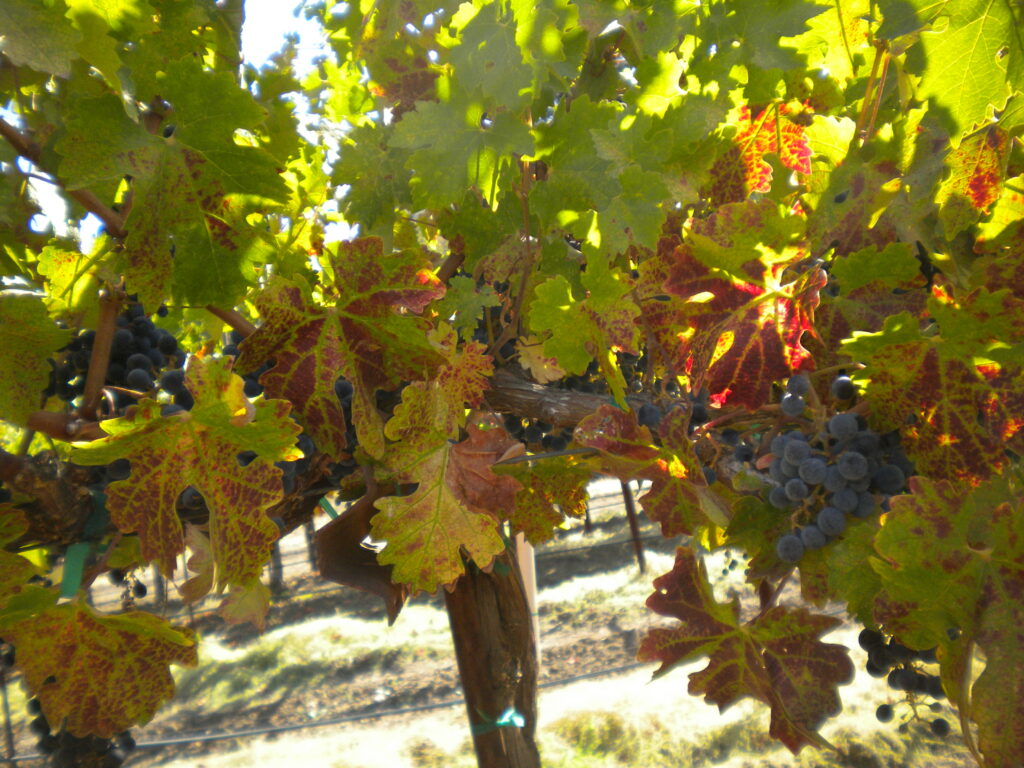By: Tracey L. Kelley
In the May-June issue of The Grapevine Magazine, a savvy group of experts provided detailed information about irrigation system maintenance. That article outlined seasonal start-up and troubleshooting tips. For part two of this topic, we’ll move on to ongoing system checks, typical problems often overlooked, monitoring water flow and quality and critter control.
Once again, our experts are:
- Guy Fipps, Ph.D., P.E., professor and extension specialist of irrigation and water management at Texas A&M University, College Station, Texas; in collaboration with Charles Swanson, extension program specialist, Texas A&M University.
- Jacob Hernandez, CCA, owner, JH Ag Consulting, Santa Margarita, California; in collaboration with James Anshutz, AGH20, irrigation engineer with Netafim USA in Fresno, California; and the Cal Poly SLO Irrigation Training and Resource Center, San Luis Obispo, California.
- Mark Hewitt, district sales manager, Rain Bird Corporation Ag Products Division, in Azusa, California.
- Steve Purvins, owner, The Vineyard at Lawton Hall in Bushwood, Maryland, which produces Vidal Blanc and Chambourcin grapes.
Checks and Balances
Continual process management is the key to a fine-tuned irrigation system. During the rush of season preparation, however, some aspects might inadvertently go by the wayside.
Hewitt pointed out numerous required fixes this time of year. For example, field zone valves might have broken or damaged wires because of animals, or as a result of “tractor blight”—nicks and punctures caused by machinery, which happens to vines, too.
“There might also be stuck plungers in the solenoids,” he said. “Pull coils and plungers. If the coils are swollen, replace them. Use emery cloth on plungers if they’re only slightly rusted.”
If you’ve noticed a torn or deformed diaphragm, Hewitt said, sometimes simply turning it around works, depending on the valve type, or replacing it. “Same with any springs located in the bonnet of a valve. Springs and diaphragms wear out or develop a new ‘memory,’ especially pressure-reducing valves that are always partially open throughout irrigation season,” he said.
For growers with low-volume micro sprinklers, which are similar to drip emitters, Hewitt advised clearing nozzles of debris and “checking that any fixed spray plates or rotating spinners are providing the correct patterns, distance of throw, and uniform coverage.” LFS and LFX high-performance sprinklers often don’t require much maintenance, he said, but it’s still important to check periodically for proper rotation, nozzle clogs and “insects building in deflectors.”
Hernandez offered a reminder about flushing mainlines, submains and laterals. “This isn’t done enough by growers. Most growers flush once or twice a year—either at the beginning or end of the season,” he said. “In-season flushing should be done after fertigation events with thick materials. Flushing velocities should be greater than two fps. Have your irrigation professional develop a proper flushing routine.”
What is lurking in your system? “The moist, dark interiors of drip hoses and emission devices can be ideal environments for biological slimes and chemical precipitates to form,” Hernandez said. “Various chemical solutions exist to shock and treat these issues. Irrigation professionals should test water quality throughout the season and provide treatment plans to rehabilitate dirty lines and emitters and implement continuous treatment to maintain the lines after cleaning up.”
Fipps added that if growers don’t already have flow meters and pressure gauges, now’s the time to install them.
“Monitoring system pressure and flow rate are crucial for managing operation and scheduling. Unfortunately, many vineyard drip systems lack either a flow meter or pressure gauge—or both—on their system,” Fipps said. “Observing situations of increased flow or decreased pressure can often be signs of leaks in the system, whereas situations of decreased flow and increased pressure can be signs of clogging of the drip emitters.”
Pay Attention to Pumps
“Attention to pump controls should always be given,” Fipps told The Grapevine Magazine. “Pump controls should be in manufacturer-recommended housings that prevent moisture accumulation, or pests like ants and wasps from building nests in or above the components.” He added that “if injection pumps are used for fertilizers or chemicals, hoses should be inspected and replaced if there are any signs of cracking or dry rotting to prevent chemical spills and waste.”
Hewitt said you might have to check impellers if pressure is lower than before, indicating they might need replacing. Packing leaks might mean replacement, but also a need to refill oil cups and install mechanical seals.
Also, Hernandez suggested adding a variable frequency drive (VFD). “Adding a VFD to your pumping station allows for a soft start of pumping motors, reducing wear and tear. If growers have multiple irrigation methods, various plant and row spacings, different size irrigation sets or sets on slopes, VFDs allow for one pump to operate on a number of different pressure and flow settings. This permits a grower only to use the amount of energy they need for the particular set they’re irrigating,” he said.
Managing Water Effectively
Fipps said one aspect often overlooked by growers is monitoring water quality. “Annual analysis of water quality, whether it’s from groundwater or surface water, should be conducted to check salinity and mineral composition, which can affect both the irrigation system as well as plant health,” he said. “Knowing the water quality helps guide growers on how much water to apply at irrigation, as well as prevent any negative reactions from injecting chemicals or fertilizers into the system.”
He also strongly recommends soil moisture sensors—a technological tool that works to your advantage. Soil moisture sensors might initially seem expensive, averaging $300-$500 per unit, plus the cost of telemetry devices for data transmission across the vineyard, but, Fipps said, “they take the guesswork out of deciding when it’s time to irrigate.” If you can’t afford to populate the vineyard with multiple sensors, some experts recommend having one or two in an irrigation block representative of the overall field profile.
Hernandez also recommends expert analysis. His consultancy tries to bridge the gap.
“Certified crop advisors and other irrigation professionals can help vineyard managers maintain and service their irrigation systems with analysis, implementation and ongoing monitoring to aid in the reduction of energy use; and improving crop performance through better distribution uniformity (DU).”
As a method of irrigation application efficiency, Hernandez offered two tips.
The first is setting up proper scheduling for both duration and amount of water to replace soil moisture used by the vines. “Improper scheduling can result in runoff, deep percolation, crop stress and even crop damage,” he said.
His second tip is to “use monitoring technologies to give virtual pump test and DU evaluation data every 15 minutes. These sensors give insight into the impact of changes in practice and hardware,” Hernandez said. “For example, if a DU evaluation finds extensive plugging, we’ll want to rehabilitate the lines with chemical treatment and flushing. Pressure sensors installed at strategic locations in the field can tell us almost immediately if we’ve improved the pressure in the drip hoses and provide a ‘heads-up’ during the irrigation season that we’re beginning to have a problem that can be addressed before it becomes serious.”
Purvins suggested growers ease inadequate volume issues with proper emitter spacing. “During extreme drought conditions, my system doesn’t supply enough water. Fortunately, I’ve only experienced one such year out of 20. I would spec the next system with twice the number of emitters—48” spacing vs. 96”—and adjust zones accordingly.”
He also pointed out the value of developing partnerships with equipment vendors who understand what you’re trying to accomplish. “When I purchased my system, the rep was knowledgeable about sizing the system but had no experience with vineyards. Such experience would have been useful.”
Hewitt said his company is trying to assist vineyard operators with water management through technology products, such as Rain Bird IQ Water. “Real-time sensors and remote web-access allow growers to monitor every aspect of their irrigation system from the water source to the emission device. They can focus in on a single irrigation system part, or see the big picture across every system they manage,” he said.
What About Those Critters?
Since we don’t grow in a biosphere, there will always be wildlife control issues. Often, our experts said, it’s easier to anticipate their actions with some preventative measures.
Purvins of The Vineyard at Lawton Hall has had a critter or two chew tubing, but since that damage is easy to spot and repair—and the vines and grapes aren’t bothered—he feels he doesn’t need to control wildlife.
Hernandez of JH Ag Consulting said, “As we install more sensors and monitoring technology, we’re seeing that animals like to chew on sensor wire and electronic cables. Wrap monitoring systems with a wire screen to protect them from animals and passing farming equipment.”
He also recommended that growers “bury five-gallon buckets at the downstream ends of some of the hoses and allow water from emitters to keep the buckets full during the summer to provide an easy water source.”
Hewitt told The Grapevine Magazine that setting out water is a good idea, plus using more natural control methods. “For larger animals—such as coyotes and foxes—simply put a large 2” high pan under your drip tubing. The water will overflow and still get water to your plants, and the critters can get the drink of water they want without chewing on the drip tubing.”
“It’s a bit tougher to combat gophers and ground squirrels, especially with buried hose systems,” Hewitt said. “One grower I know uses trained falcons that he releases into the area to help control these pesky critters.”







